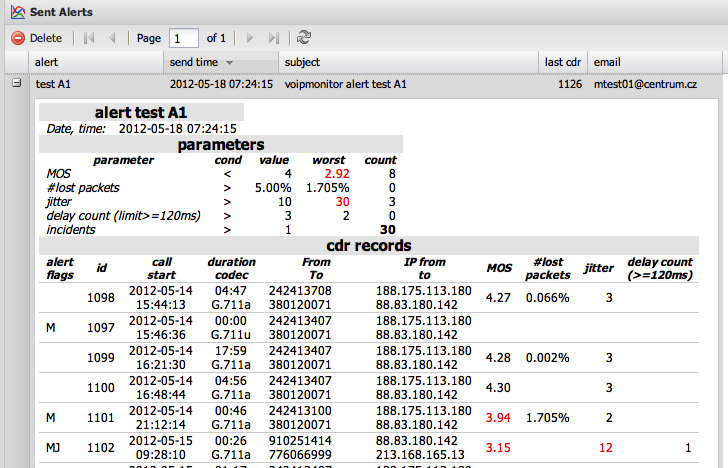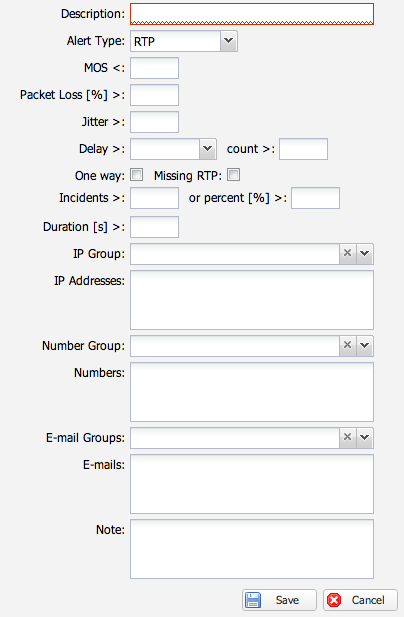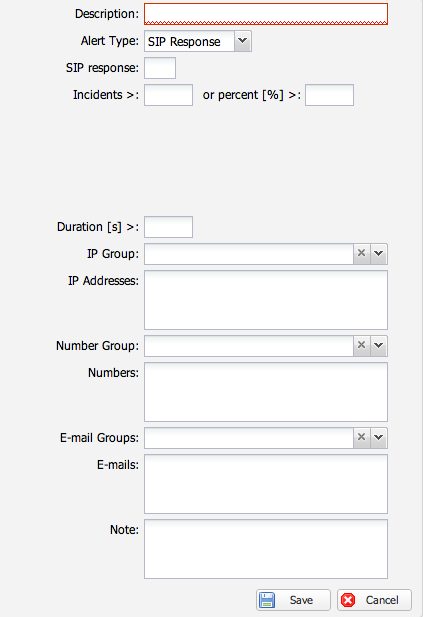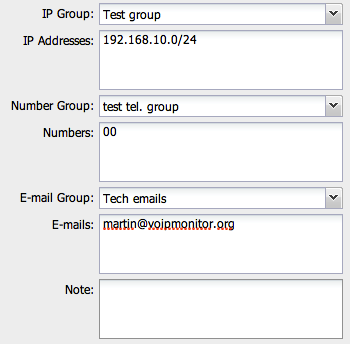Alerts: Difference between revisions
No edit summary |
No edit summary |
||
| Line 1: | Line 1: | ||
Alerts&Reports contains tools to generate email alerts based on QoS parameters or SIP error conditions. It can also generate daily report or generate ad hoc reports. All generated alerts and reports are saved in history. | Alerts&Reports contains tools to generate email alerts based on QoS parameters or SIP error conditions. It can also generate daily report or generate ad hoc reports. All generated alerts and reports are saved in history. | ||
Emails are sent through PHP function "mail" which relies on linux Mail Transport Agent (MTA). The smtp should be configured in the linux server in a standard way. It is usually Exim or postfix or sendmail. Refer to your linux distribution MTA documentation. | |||
Alerts are processed by PHP script which has to be placed to crontab | Alerts are processed by PHP script which has to be placed to crontab | ||
Revision as of 15:26, 27 August 2014
Alerts&Reports contains tools to generate email alerts based on QoS parameters or SIP error conditions. It can also generate daily report or generate ad hoc reports. All generated alerts and reports are saved in history.
Emails are sent through PHP function "mail" which relies on linux Mail Transport Agent (MTA). The smtp should be configured in the linux server in a standard way. It is usually Exim or postfix or sendmail. Refer to your linux distribution MTA documentation.
Alerts are processed by PHP script which has to be placed to crontab
Debian
echo "* * * * * root php /var/www/php/run.php cron" >> /etc/crontab
Centos
echo "* * * * * root php /var/www/html/php/run.php cron" >> /etc/crontab
(it depends where is the voipmonitor GUI installed, it should point to run.php file)
modify
Do not forget to killall -HUP cron (crond)
Configure alerts
Email alerts trigger alerts based on SIP protocol or RTP QoS metrics.
Alerts are divided into two types RTP alerts and SIP signalization. Each of those shares common filters: Duration of call, IP addresses, Numbers and E-mails to which the alert is sent.
Alert type RTP allows alerts to trigger based on MOS, Packet loss, jitter, Delay, one way call (call was answered and one of RTP stream is missing) and Missing RTP (call was answered and both RTP stream is missing). An alert is triggered once one of the thresholds is reached and number of incidents is greater than the set value or number of CDR is over percent threshold.
SIP response alert type triggers alerts based on SIP response type.
If the SIP response is empty - all call attempts are reported based on the filter criteria only. This is for example useful to watch calls to 112. If SIP response is 0 - all calls with no response are triggered (unreplied INVITE)
IP/Number group – choose to which group of IP/Numbers the alert is applied. Groups are defined in Groups main menu. IP address/Numbers – choose individual IP addresses/numbers or network ranges to which is the alert applied. Delimited by [enter]E-mail Group – choose to which Emails defined in groups should be alert sent. E-mails – choose individual list of E-mails for alert delivery. Delimited by [enter].
Sent alerts
Each sent alert is saved into history and looks exactly same as delivered in the email.
 In the parameters table overall QoS metrics are shown with bad values highlighted.
In the parameters table overall QoS metrics are shown with bad values highlighted.
 The CDR records table shows individual cases. Alert flag column shows if the call alerted because of (M)OS, (J)itter, (P)packet loss or (D)elay.
The CDR records table shows individual cases. Alert flag column shows if the call alerted because of (M)OS, (J)itter, (P)packet loss or (D)elay.



